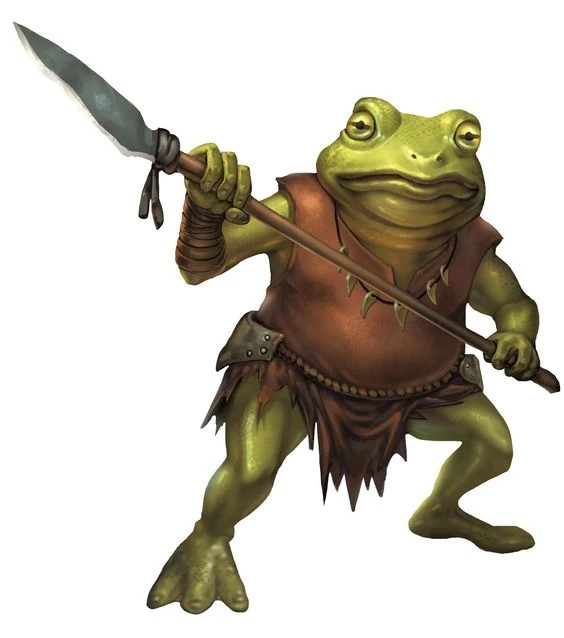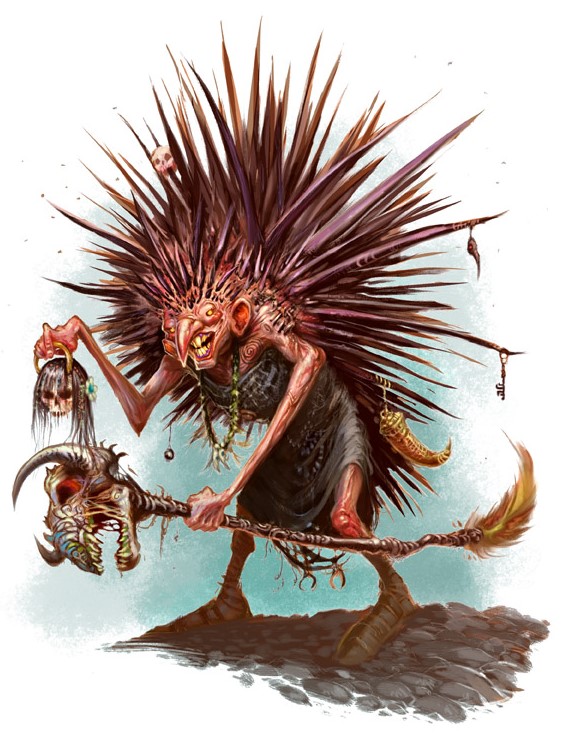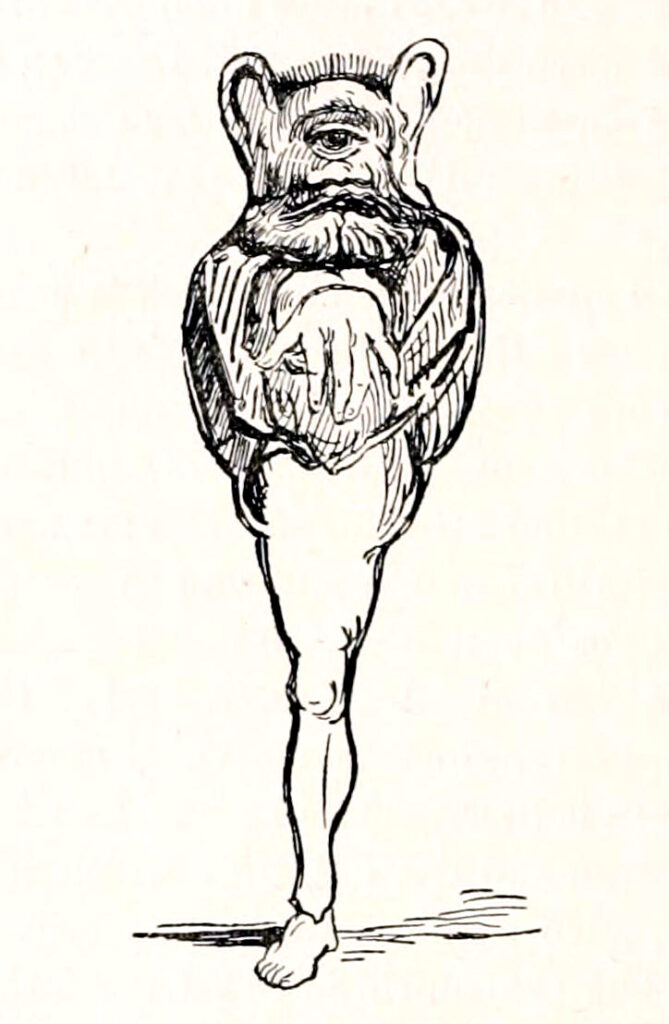Frogbolds for C&C
While searching for shelter from the icy wind and the coming night, the shipwrecked adventurers trekked to the forest where they encountered encamped frogbolds and several war-trained axe beaks. The fight was fierce but brief. The adventurers won, and several frogbolds escaped into the deeper woods. Among the camp gear the frogbolds abandoned, the adventurers discovered several crude boxes on a cart. In the boxes? Sprites captured by the frogbolds for some dark purpose.
Frogbold
Number: 4-24, 40-400
Size: Small
HD: 1 (d4)
AC: 15
Saves: P
Move: 20 ft., hop 30 ft., swim 20 ft.
Attacks: By weapon
Special: Darkvision, 60 ft., Hopping Charge, Light Sensitivity
INT: Low
Alignment: Lawful Evil
Type: Humanoid
Treasure: 1
XP: 7 + 1
Frogbolds are small, frog-like humanoids, the largest being somewhat bigger than a halfling. They have moist, smooth skin that has an almost leather-like toughness. Neither particularly clever nor notably brave, frogbolds prefer to attack outnumbered or obviously injured prey. Their tactics tend to be simple: charge into the fray and gang up on enemies as often as possible.
Frogbolds make their lairs in caves near bodies of water, whether fresh or salt. When above ground, they may set up crude shelters for a temporary camp used as a central location from which to radiate out and make raids to capture weapons, armor, and prisoners (for use as food or sacrifices). Frogbolds know little of crafting or mining, and so they seldom modify their cave lairs to any great extent, nor do they manufacture their own tools.
Female frogbolds lay eggs, which must be deposited in water (again, either salt or fresh). The frogbold spawn consist of round clusters of eggs connected into ribbons by a gelatinous substance. The tadpoles develop and hatch quickly, and they are cannibalistic, ensuring that only the strongest survive the few weeks necessary to grow into air-breathing humanoid form.
Most frogbold lairs have no more than 40 or so adult male members. Rarely, a strong chieftain (2 d8-HD) rises up to rally several family groups into a tribe numbering as many as 400 adults. A chieftain is served by one sub-chief (1 d8-HD) for every 10 frogbolds in the tribe. The number of females in a tribe typically equals two-thirds the number of adult males with an additional one-fourth the number of adult males in hatchlings.
Combat: Frogbolds can make a hopping charge into melee combat, leaping up to 30 feet (reaching a height of 15 feet during the jump), thus gaining a +2 to hit and damage for that attack (but suffering a -4 to AC until the start of their next turn). They use basic weapons, especially spears and javelins. They wear crude leather or hide armor, and seldom use shields. Chieftains and sub-chiefs have better armor and weapons, and any magic items possessed by the tribe are surely in the possession of these leaders. Due to their light sensitivity, frogbolds suffer a -1 to hit penalty when fighting in bright light.
Special: Frogbold witchdoctors are druid/wizards, but they are limited to fifth level. They do not use spellbooks even for their wizard spells, but instead prepare their spells once per day as does a druid. Some chieftains may have levels as a barbarian or a ranger, but they seldom have advanced to higher than third level in either class.





